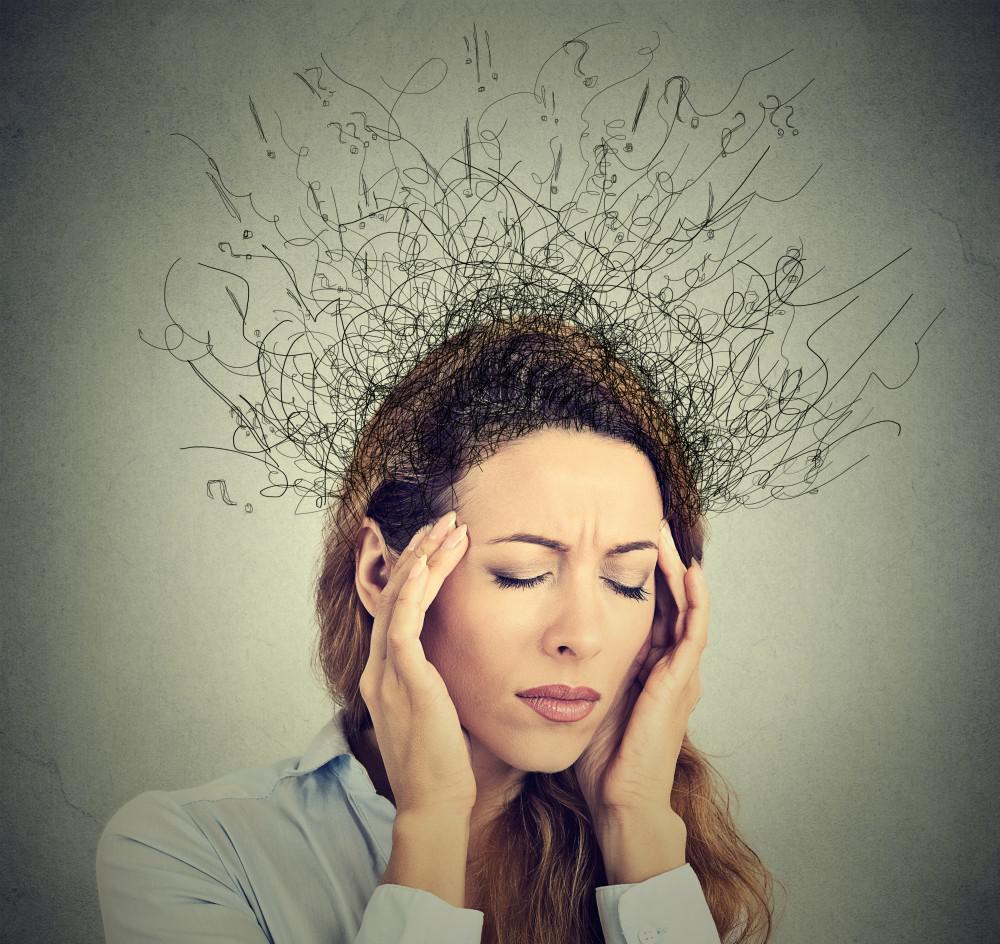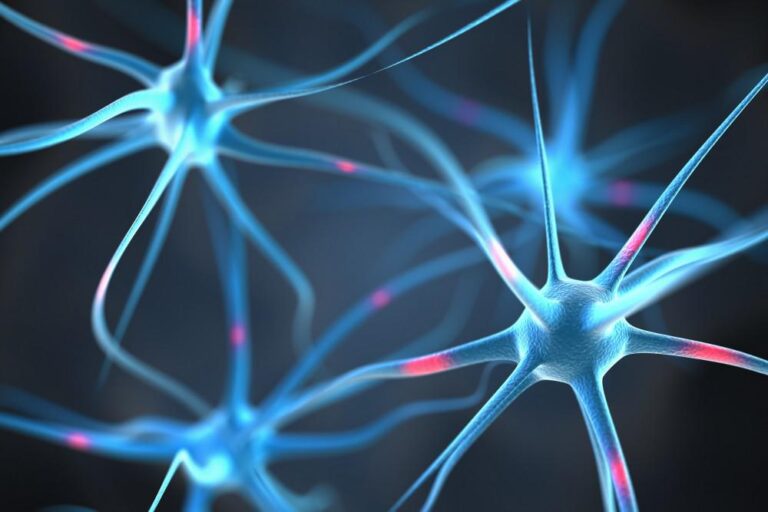What is Migraine
Migraine is a complex neurological condition that affects about 12 percent of general population. It is characterized by acute throbbing and pulsating pain, usually on one side of the head and is typically accompanied by nausea, vomiting, sensitivity to light and sound, and vision disturbances like flashy lights, spots or zig zag lines.
Migraines are often used interchangeably with headaches but it is a unique condition. Migraine attacks can last for hours to days and the pain can be disabling. Migraine expert Dr. Peter Goadsby describes it as a “disorder of the brain” that can cause serious cognitive dysfunction.
Migraine can be severely debilitating and can affect your work, family and social life. Migraine sufferers often prefer to rest in dark and quiet environment for the duration of the attack and may feel exhausted after the attack.
There are several stages of Migraine including headache and associated symptoms although one may not experience all of them during the course of a single attack.
No definitive Migraine cure has been established till date. Treatment is typically acute treatment and prevention.
MIGRAINE IS MORE COMMON THAN YOU THINK
Although extremely painful and potentially disabling, Migraine remains severely under-reported and formally untreated throughout the world, mainly because it is overwhelmingly confused with just a bad case of headache.
However, Migraine is actually one of the oldest ailments experienced and recorded by mankind. Painful headaches with visual disturbances, blurry vision and vomiting has been recorded as far back as 400 BC by Hippocrates. The word Migraine itself is derived from the Latin word “Hemicrania”, which literally translates to half (hemi) skull (crania), describing a painful condition that occurs on one side of the head.
Migraine is now considered the third most common disorder in the world, according to London-based research foundation Migraine Trust. Almost 15% of global population is affected by it, and according to the estimate of The American Migraine Foundation (AMF) at least 36 million Americans suffer from Migraines. It is also recognized by WHO as the sixth highest cause of Years Lost through Disability (YLD) throughout the world.
Migraine is far more likely to affect women than men. 3 out of 4 Migraine sufferers worldwide are women. The risk of onset is highest between 20 to 45 years of age. In many cases, though, Migraine has been observed to wind down after menopause.
Migraine Onset and Duration
Migraine typically begins as early as childhood or adolescence, although, onset can occur as late as early 40s.
Migraine can last for months and years, and often for a lifetime. Symptoms vary widely from people to people, and so does length and frequency of attacks. A single Migraine attack typically lasts for 4 to 72 hours. Most people are able to lead a normal life in between attacks.
Migraine is an inherently chronic condition, but the term Chronic Migraine usually refers to the condition in which one experiences 15 or more attacks per month. If the number of attacks experienced in a month is less than 15 that may be typified as Episodic Migraine.
Migraine Symptoms and Stages
There are multiple stages of a typical Migraine attack, although patients may not experience all of them at once. In fact, some of the symptoms are not experienced by some people even once. Migraine symptoms have an overarching similarity but vary widely from person to person in terms of severity, length, frequency, and nature of symptoms.
Migraines typically progress through four stages: Prodrome, Aura, Headache, and Post-drome.
Prodrome
This is the warning stage. This usually occurs a day or two before the actual attack. Not all patients may experience thisand the signs are often too subtle to note. Symptoms include:
- Extreme mood swing
- Constipation
- Increased thirst and urination
- Frequent yawning
- Stiffness in neck and limbs
- Tingling sensation in hand and feet
- Blind spots
- Craving for certain foods
Aura
Aura is a distinct neurological symptom that may precede or occur during a Migraine attack. This comes in forms of sensory disturbances – visual, motor, verbal, and tactile.
Not all Migraine sufferers experience the Aura stage and based on this medical phenotype Migraine is also classified in Migraine with Aura and Migraine without Aura. The latter tends to occur in more severe forms of Migraine.
These symptoms begin gradually and then build up over several minutes. An Aura phase can last from five to 60 minutes. Symptoms of the Aura phase include:
- Vision loss or blurring
- Visual phenomena, such as flashing lights, zigzag patterns, bright or dark spots etc.
- Pricking or tingling sensation in arm or leg
- Numbness in one side of the body
- Involuntary jerking or movements
- Difficulty in speech and hearing
- Sensation of being touched
Headache
The Aura stage is followed by soaring headache, sometimes overlapping. The headache is often characterized as the actual ‘attack’. An attack can last from four to 72 hours at a stretch. The symptoms include:
- Pain typically on one side of the head, in some cases multiple areas
- Throbbing, pulsating or hammering pain
- Acute aversion to light and sound
- Nausea and vomiting
- Blurred vision
- Dizziness
- Fainting
A person may experience some or all the symptoms during the course of an attack, though the frequency and severity vary from person to person.
Post-drome
This is the final stage of Migraine that occurs after the headache attack. For many, this stage feels similar to the recovery from a long-term illness or accident. The sufferer may feel drained and tired, and unable to properly function, or they might experience a lightening or uplifting of mood. This too varies widely. This stage can continue up to 24 hours. Symptoms may include:
- Weakness
- Dizziness
- Confusion
- Exhaustion
What Causes Migraines
The underlying cause of Migraine is not well-understood. Multiple studies have suggested that both genetic and environmental factors may play a role.
Changes in the brain stem and the trigeminal nerve – an important neural pathway in the brain that transmits pain – are considered a possible cause. Disruption in the levels of brain chemicals, particularly Serotonin, is also being studied closely in relation to Migraine attacks, as Serotonin helps regulate the distribution of pain in the nervous system.
Serotonin levels in the brain drop drastically during a Migraine attack. It has been theorized that the low level of Serotonin causes the trigeminal nerve to release neuropeptides into the brain’s outer covering, which in turn causes the Migraine pain. However, it is still not fully established whether fall in Serotonin levels causes Migraine or it is the Migraine that causes Serotonin to fall.
MIGRAINE TRIGGERS
There are several triggers that have been known to precede the onset of a Migraine attack or development of Chronic Migraine.
- Hormonal changes in women – Fluctuating levels of Estrogen can trigger Migraines.
- Certain foods – Processed food, salty food, cold cuts, chocolate, yeast, aged cheese, and food additives like the sweetener Aspartame and the preservative Monosodium Glutamate (MSG) have been known to trigger Migraine attacks.
- Dehydration – A severe lack of hydration in the body is one of the most well-known triggers of Migraine pain.
- Disrupted meal patterns – Fasting, skipping meals, or long delays between meals can trigger Migraine pain.
- Caffeine – Caffeine overdose and Caffeine withdrawal, both have been linked to the onset of Migraine pain.
- Alcohol, especially wine.
- Stress and anxiety due to workload or home problems.
- Sensory disruptions – Bright light, loud noise, strong smells; all are known to trigger Migraine pain.
- Sleep pattern disruptions – Both oversleeping and sleep-deprivation can cause Migraine. Also, sleeping pattern disruptions like pulling an all-nighter the day before an exam or jet lag.
- Physical exertion – Intense physical activities like sports or sexual activity can trigger Migraine in some.
- Overuse of medication – Taking over-the-counter pain medication for more than 10 days at a stretch can trigger Migraine in some (Analgesic overuse headache)
- Weather fluctuation – A sudden change in the weather or fluctuating barometric pressure can trigger Migraine.
MIGRAINE RISK FACTORS
There are several factors that can make one more prone to experience Migraine attacks. These include:
- Heredity – Having a family member or members with Migraine increases the chance of Migraine in a person.
- Sex – Women are three times more likely to have Migraine than men. Hormonal changes especially change in Estrogen level is often linked to Migraine pains. Women often experience Migraine just before or after their periods. Migraines also coincide with Pregnancy and Menopause in many cases. Some again find their Migraines improve after Menopause. Migraine onset can also begin during the post-partum phase.
- Age – Migraines can start at any time of life, depending on the presence of trigger factors. However, the typical time of onset is late childhood or adolescence. Most sufferers will have had their first attack by the time they reach 40. After that, the severity tends to gradually recede.
Migraine Diagnosis
Migraines often goes untreated and undiagnosed due to lack of proper understanding and awareness. Headaches are often ignored, and many people fail to recognize if there is a pattern to their headache.
Keep a diary of your headache; note down how often they occur, Are they associated with other symptoms or if there are changes to the pattern etc.
If you find some of the symptoms described above occurring with your headaches, or notice any changes in your headache pattern, you should consult a headache specialist or neurologist to discuss a treatment plan.
There is no definite test or procedure that can establish the diagnosis of Migraine. Your family and medical history and the list of symptoms will provide the basis of the neurologist’s advice. Some blood tests and neurological exams may be prescribed. The best way is to keep a log of your symptoms.
In some cases a headache may warrant immediate attention. These include:
- Headache with fever, mental confusion, seizures, numbness and trouble speaking
- A sudden and acute headache like a thunderclap or stroke of a hammer
- Continually worsening headache after a head injury
- New headache after the age of 50
If you experience any such symptoms, contact your doctor immediately or call 911.
Migraine Treatment
Migraine remains an incurable condition to this date. Focus remains on acute treatment and prevention.
There has been much improvement in pain management and frequency reduction treatments in recent years.
Your neurologist will advise you a holistic approach to treatment of migraine with lifestyle changes and medications suited to your specific symptoms.
Medications
There are two types of medications used in treating Migraines –
- medicines to reduce pain when an attack occurs.
- medicines that slow down or reduce the severity and frequency of Migraine attacks.
Neither kind of medication should be taken without expert advice because overuse of Migraine-medication can itself be a trigger for migraine.
Nerve Stimulating Devices
When medications fail to provide adequate relief, your neurologist may suggest the use of a Neurostimulation. Similar to a headband with electrodes, this has only recently been approved by theFood and Drug Administration. In clinical trials, use of neurostimulation has been shown to cause reduction in Migraine headache days.
Lifestyle Changes
Along with medications and other prescribed treatments, it is equally important to identify lifestyle factors that can act as triggers and modify them accordingly. Here are some suggestions to avoid Migraine triggers:
- Fix a daily schedule for meals and sleep and stick to that.
- Drink plenty of water and keep yourself hydrated.
- Exercise regularly.
- Take measures like therapy and meditation to reduce everyday stress and anxiety.
- Eat healthy and avoid processed and junk food.
- Women experiencing Migraine should consult their doctors about any medication containing Estrogen they might be taking, as increased levels of Estrogen have been linked to Migraine tr. These medications include birth control pills and hormone replacement therapy.
Migraine can be harmful and disabling to your personal and social life and add to nonproductive days of life.
But with a timely diagnosis, right treatment, and proper lifestyle changes, quality of life can be significantly improved.
Book an appointment today if you recognize any of the symptoms illustrated above.



